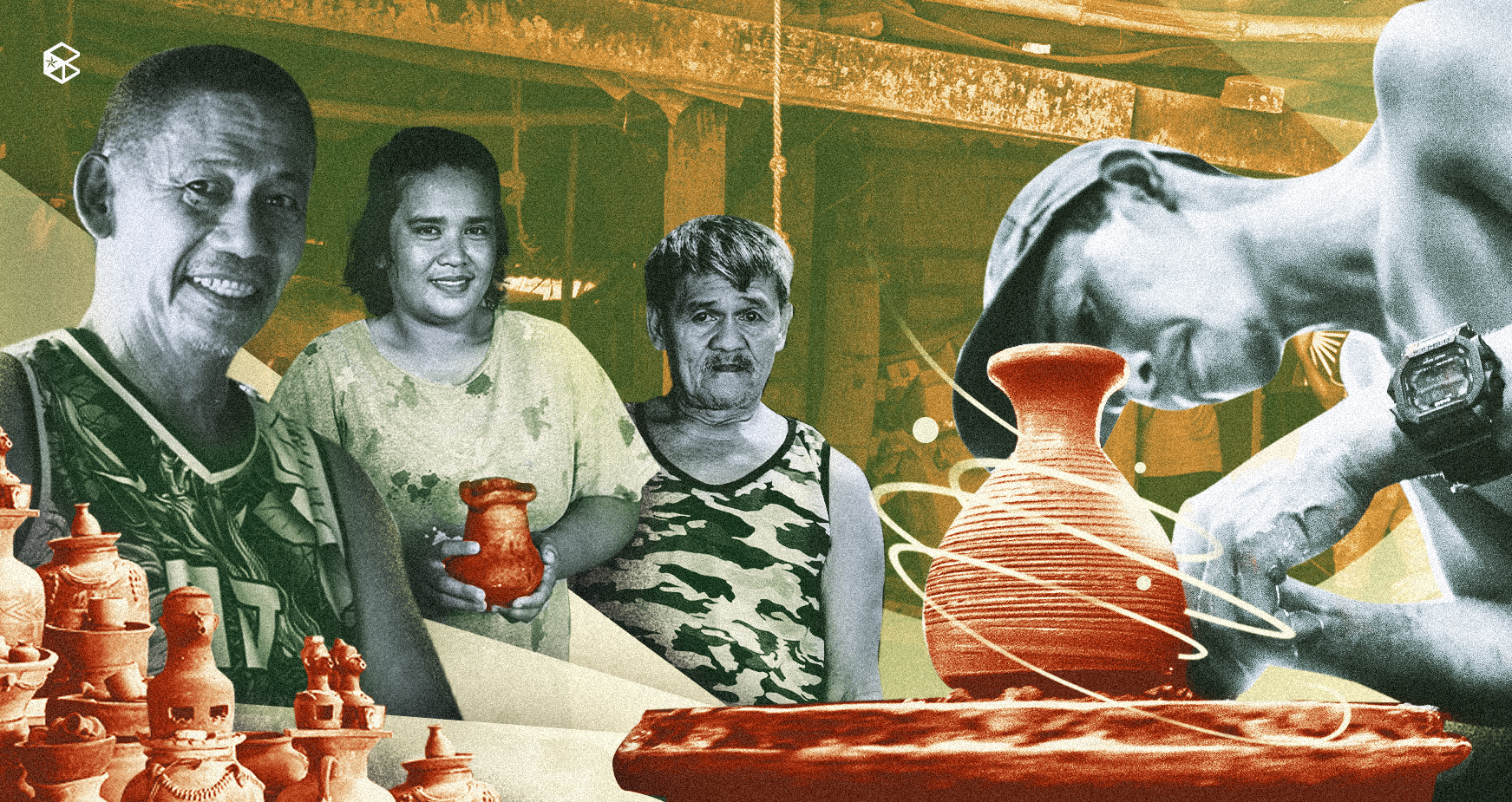For over a century, pottery in Ilocos Sur has been a vital part of both livelihood and culture. Passed down through generations, the craft has shaped not only clay but also the identity of the community. Despite modern challenges and shifting interests, local potters are determined to keep this tradition alive, ensuring it remains a cornerstone of the province’s heritage.
In a series of interviews with The Benildean, potters from Ilocos Sur discussed their mastery of the age-old craft that has defined their families for generations. From sourcing clay in the fields to shaping it into both practical and decorative pieces, their hands tell the story of a tradition that has withstood the test of time.
Kuya Oliver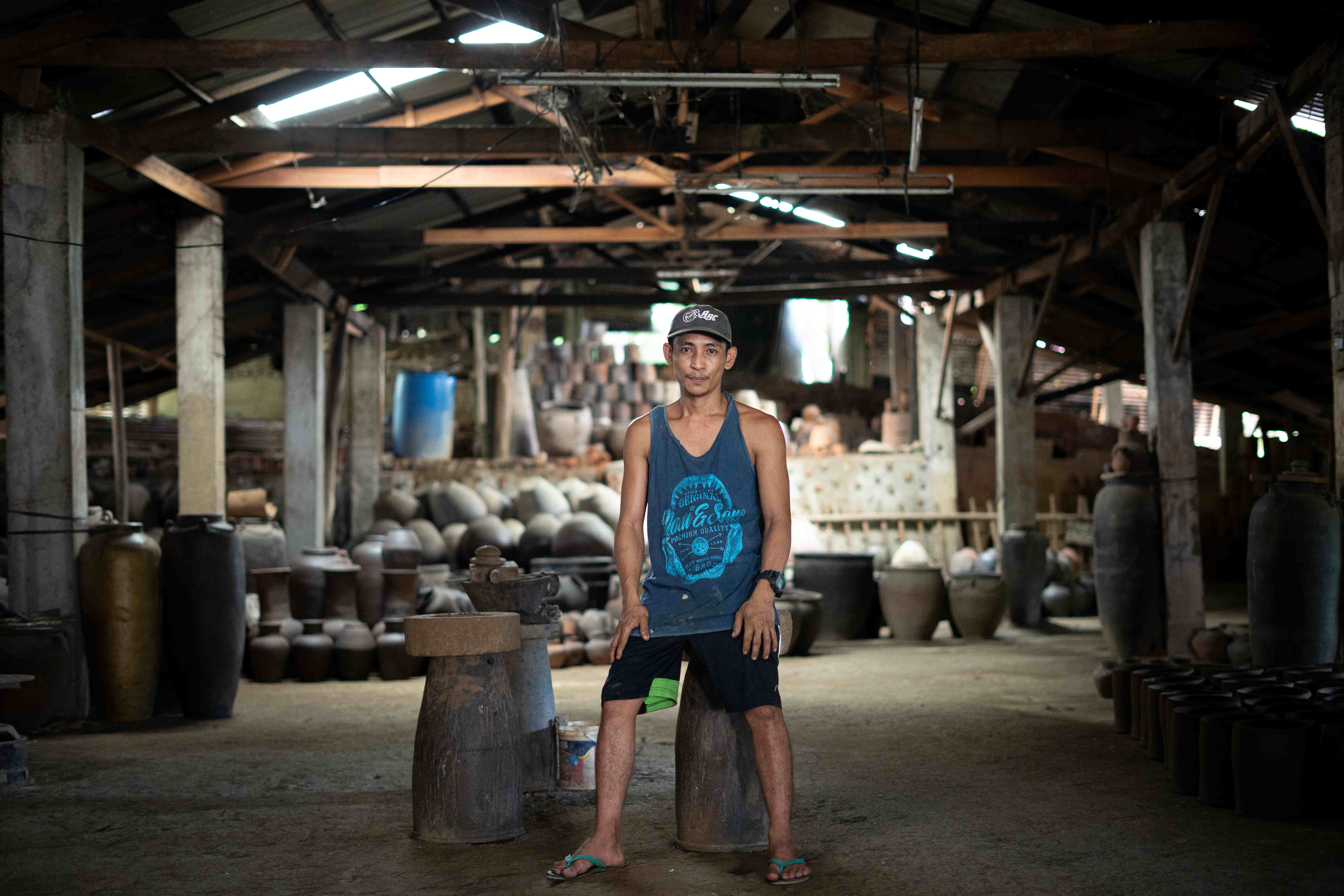
Kuya Oliver has spent over seven years perfecting the art of pottery. His hands, weathered by years of shaping clay, carry the stories of a craft deeply rooted in his hometown’s culture. For Kuya Oliver, pottery is more than a livelihood—it’s a practice that has been passed down from previous generations.
“Nagsimula since 1824, [mga] Chinese po talaga nagpalaganap dito,” he explained. “Bali natuto lang po ‘yung mga taga dito, minana-mana ng iba’t ibang henerasyon, [kagaya] ko po na pang-apat na henerasyon na.”
He creates a range of pottery, from functional items like salt containers, tapayan (water jars), and palayok (cooking pots) to decorative pieces that bring charm to any home. “Mga lalagyanan ng mga asin, mga tapayan, mga palayok, saka yung mga pang-dekorasyon,” he said.
Kuya Oliver shared the painstaking process behind his craft, “Galing po sa bukid ‘yung clay, tapos ‘yung mix naman po ay buhangin na galing sa tabing dagat. Tapos ibabad sa tubig hanggang [maghalo], tsaka aapakan ng kalabaw ng halos apat na oras para lumaki at magdikit.”
Through his work, Kuya Oliver ensures the legacy of Ilocos Sur’s pottery lives on. Each piece he molds is more than clay, it's a testament to the resilience and creativity of his ancestors. In every pot, the story of his heritage takes shape, inspiring future generations to honor and preserve this enduring tradition.
Kuya Constantin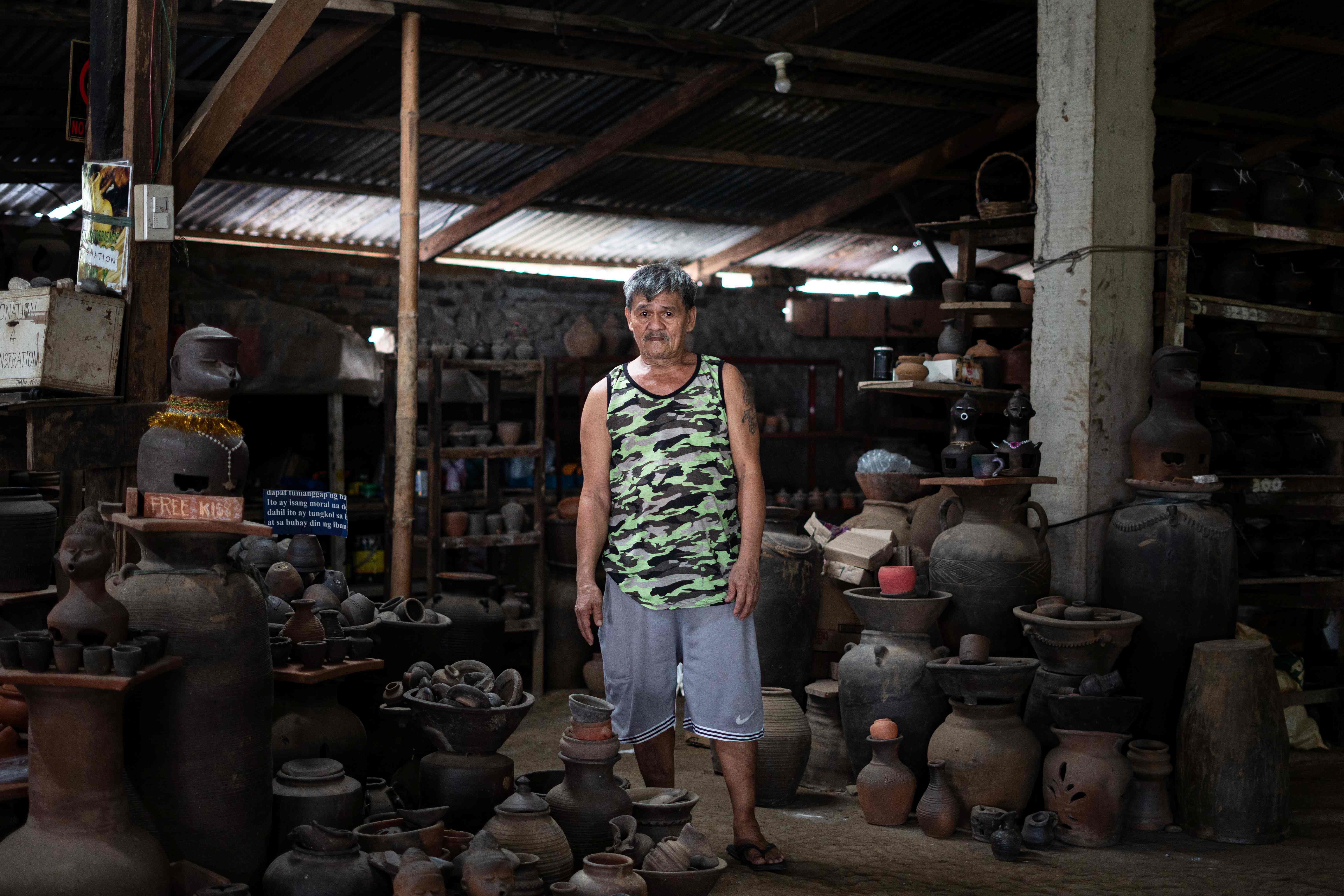
For over four decades, Kuya Constantin has dedicated his life to the art of pottery, shaping not only clay but also the cultural identity of Ilocos Sur. “Ito na po ang kinagisnan naming panghanapbuhay,” he shared, highlighting how pottery has been a livelihood deeply ingrained in his family’s roots as they continue the tradition of creating pots or large jars traditionally used for water storage and other purposes.
Despite his years of experience, Kuya Constantin expressed the challenges potters face today. “Wala po kami masyadong suporta na natatanggap mula sa lokal na pamahalaan,” he said, lamenting the lack of assistance from local authorities that could help sustain their craft.
He also shared his concerns about the younger generation’s declining interest in pottery. “Wala na po, kasi ‘yung mga bata ngayon inuuna na ‘yung mga kompyuter, mga selpon na ang mga inaasikaso ngayon,” he remarked, noting how modern technology has taken precedence over traditional crafts.
Even as times change, Kuya Constantin continues to shape not only clay but also the legacy of his craft. His story is a testament to the enduring spirit of artisans who keep cultural traditions alive, despite the challenges they face.
Kuya Bong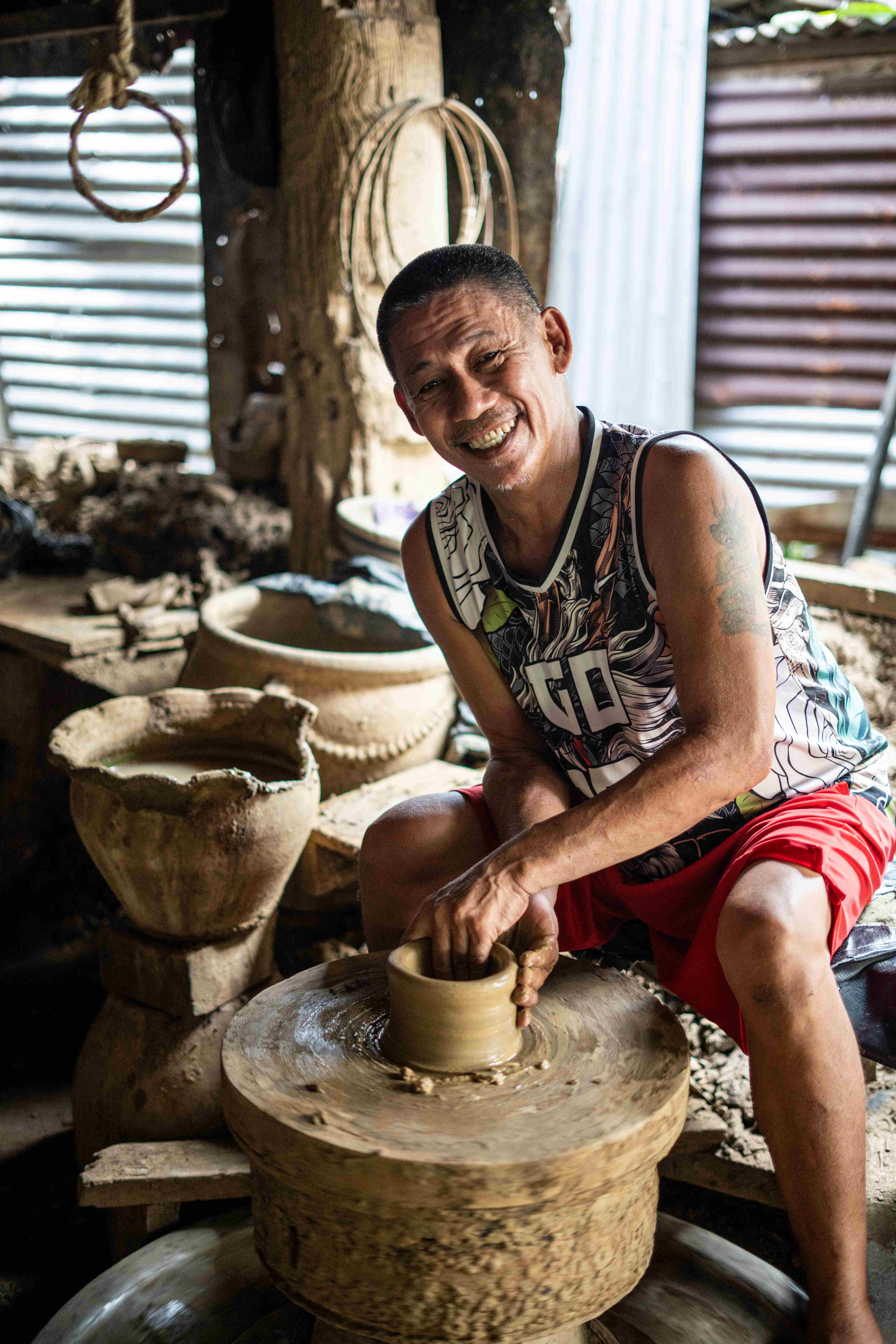
Kuya Bong’s family has been in the pottery business for generations. “Nagsimula po itong pottery namin sa lolo ko noong 1920,” he shared, reflecting on the long history of the craft in his family. Despite his passion for the craft, Kuya Bong faces the painful reality that the younger generation is losing interest.
“Wala na akong matuturuan, ayaw ng mga kabataan ngayon, mas gusto nila ang mga gadget. Minsan nga po naiiyak ako [dahil] pag wala na po ako, wala na rin po itong [pottery na 'to],” he confessed, the emotion evident in his voice as he worries about the future of the business.
Kuya Bong feels a deep sense of responsibility to continue his family's pottery tradition. “Gusto ko po ipagpatuloy itong [pagawaan], dahil pinundar po ito ng lolo [namin]. Hindi po kami nakatayo, nakadilat ang mga mata, naka-aral kung ‘di dahil dito sa [pagawaan]. Gusto ko po talaga ituloy ito pero ‘yun nga lang po wala akong kasama,” he said, emphasizing the vital role pottery played in his family’s livelihood.
His connection to the craft runs deep, “Ayaw ko po talaga mawala ito, dahil siya po ang nagbuhay sa amin.” Pottery, to him, is not just a source of income, it’s something that supported his family through generations.
However, times have changed, and Kuya Bong feels the weight of this transition. “Ngayon po wala na pong trabaho, nagpapakitang-gilas na lang po, hindi po tulad ng dati, araw-araw po talaga ‘yung trabaho. [Dagdag ko na lang] wala rin po akong sahod dito, kahit tulong mula sa gobyerno wala,” he lamented, expressing frustration over the lack of support.
Despite these challenges, Kuya Bong remains determined to preserve pottery in the region. “Dahil marami pa rin pong hindi nakakakita or [na-experience], at tyaka kasama na po ito sa tourism [ng Ilocos Sur], kaya ayaw ko ito mawala. Parang libangan ko na lang ito, para hindi rin po mawala ‘yung mga alaala,” he explained, recognizing that pottery is not just a craft but a vital part of Ilocos Sur’s heritage and tourism.
Above all, Kuya Bong finds fulfillment in bringing joy to others. “Basta ang importante po sa akin ay makapagpasaya po ako ng tao,” he said with a smile. At 54 years old, Kuya Bong’s dedication to the craft has shaped his life. “Sa awa ng Diyos, napag-aral at napagtapos ko po lahat ng anak ko dahil sa pottery,” he proudly shared, knowing that his work has given his children opportunities he never had.
While his family urges him to rest, Kuya Bong can’t imagine stopping. “Gusto nga ng pamilya ko na tumigil na ako dito, para makapagpahinga na, pero ayaw ko dahil hinahanap pa rin ng katawan ko itong [pottery],” he said, his passion and commitment to the craft still strong after all these years.
Ate Eileen and Ate Erlyn
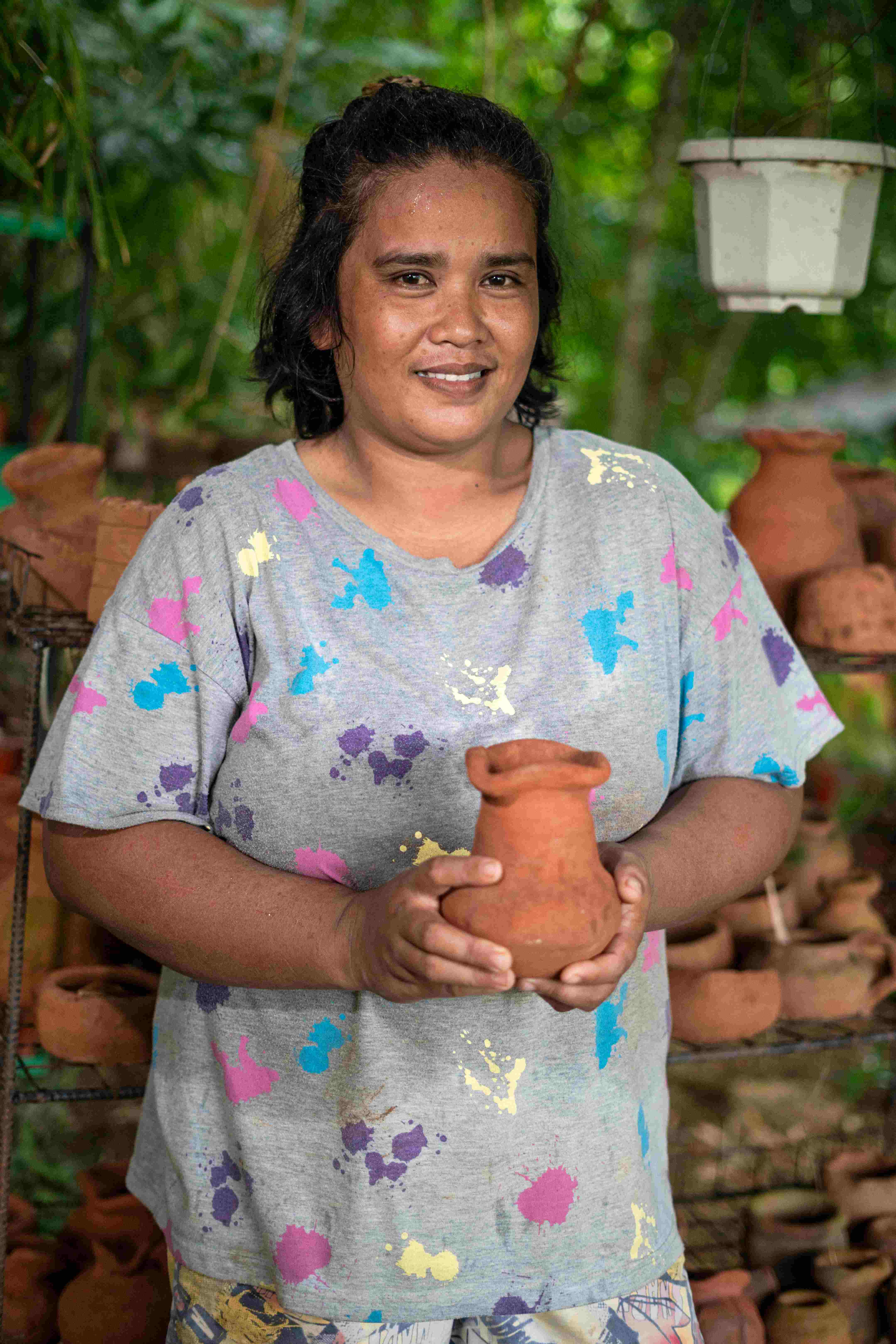
Next are Ate Eileen and Ate Erlyn. Ate Eileen has been in the pottery industry with the craft passed down from her grandmother. She specializes in creating tiles saying, “Ako po kasi, sa tiles po ako. Yung asawa ko po sa palayukan. Natuto ako noong bata. Namana ko sa lola ko noon pa.”
Ate Erlyn, a seasoned potter with years of experience in crafting Ilocano terracotta pottery known as damili, represents Ate Eileen, who works under her guidance. She explained further on behalf of Ate Eileen, “Yung sa amin kasi, pottery namin, made of clay pero terracotta. Pula siya. Iba ‘yung pagkaluto namin ng mga damili […] Walang lahok na semento.”
Seeing how several pottery products are stacked against the walls, most visitors of Ate Erlyn believe that the business has always been thriving. However, this wasn’t the case in the past, and tourism played a major part in the boost of demand today. She recalled, “Dati, pinamimigay lang ‘yung mga gawa namin. Walang bayad-bayad. [...] Gumanda ‘yung demanda ngayon. [...] Malaki ‘yung tulong. Ngayon, may mga nagd-edemo na. Tulong din ‘yon sa turismo.”
Despite the stability of her pottery business, there is still some uncertainty for her craft’s future. Ate Erlyn also aired similar sentiments of how the youth today in Ilocos Sur aren’t fully interested in the craft, with only few families passing on their traditions to the younger generation. “Yun ‘yung problema namin ngayon. Mas gusto ng mga bata na humawak ng mga computer at cellphone. Ayaw na nila humawak ng lupa. Iilang pamilya na lang ay napapasa ‘yung paggawa ng damili.”
Moreover, other challenges also threaten the craft for Ate Erlyn. She cited how the rainy season would affect their products, especially when pots are heated in a kiln. “Tuwing malakas na ulan, nasisira minsan ‘yung mga ibang gawa na hindi pa niluluto. Nasasayang ‘yung mga produkto din.” Besides that, the potters haven’t received any support from the local government. Ate Erlyn added, “Wala naman kasing suporta kami din ngayon. Wala kaming asosasyon noon. Ayun ‘yung kailangan at pinaka-importante para sa gobyerno para mabigyan kami ng suporta.”
At present, however, Ate Erlyn has formed a local association to represent the potters in her area within Ilocos Sur. “This year, bumuo kami ng grupo ng asosasyon para sa mga nagda-damili. Ako ‘yung kinatawan dito at hawak ko tatlong barangay ng mga nag-dadamili.” She hopes that this association will allow the potters not only within her area but also in Ilocos Sur, get the government support they need.
As Ilocos Sur moves forward into modernity, the potters of the province serve as living reminders of the deeply rooted craftsmanship and traditions passed down from previous generations. Their work as potters go beyond utility and aesthetics, offering a glimpse into the rich heritage in Ilocos Sur.
By supporting these local craftsmen, the traditions, creativity, and pride will continue to remain as part of the province’s culture for years to come.

